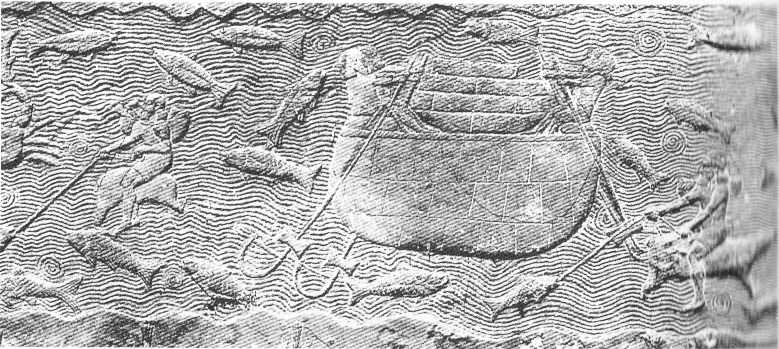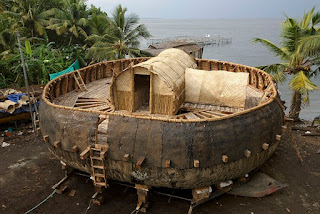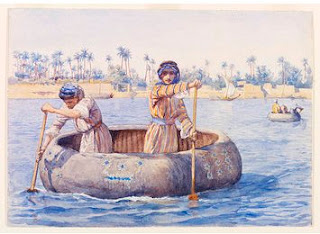 |
| "Coracle fishing boats at Mui Ne Bay, Vietnam" by Ray Zhoul (Click any image to enlarge.) |
In Coracles of the World, Peter Badge states that coracles are carried aboard almost all larger fishing boats, where they are used as tenders and for handling nets. They are also used for net fishing in their own right as much as a mile offshore. In flooded-field agriculture, they are used to gather vegetables and spray fumigants. In some flood-prone areas, almost every home has a coracle for emergency evacuation, and no doubt they are also used for all sorts of casual transportation.
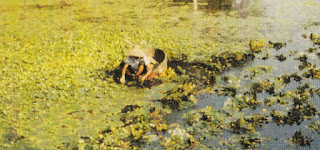 |
| Small coracle in use in flooded-field agriculture. Source: Badge/Coracles of the World |
 |
| The weave of the mat changes at the turn of the bilge, which allows it to be formed into a bowl shape without folding or puckering. Source: Badge/Coracles of the World. |
 |
| Bowl-shape coracle with two right-angled sets of three parallel frames. Source: Badge/Coracles of the World |
 |
| Coracle with parallel and radial frames, riser and sitting thwart. Source: Badge/Coracles of the World |
Sizes range from 1.2 to 3 meters in diameter, with depths from about 50cm to a maximum of about 72cm. Almost all are perfectly round, but a few oval ones have been reported, one measuring 3 X 4.5 meters.
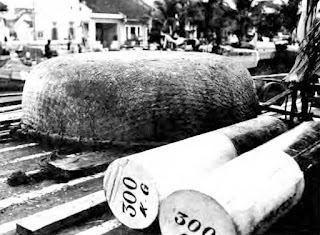 |
| Vietnamese coracle with flat bottom and straight sides. Source: The Junk Blue Book of 1962. |
A single paddle is the most common means of propulsion, with paddling done kneeling or standing or, more rarely, sitting. Paddles may have a T-grip or no end grip. They tend to be long (Badge reports a paddle 1.83 meters on a boat 1.5 meters in diameter), so that they can be used for paddling while standing and as punt poles.
Paddling technique varies greatly: some use a figure-8 scull to draw the boat forward; some use a J-stroke off to one side; still others use a "scooping" technique, lifting the blade out of the water and pulling it straight back. Sometimes, the paddle is tied to the gunwale and pivoted back and forth in a forward sculling motion. If there are two paddlers, they will sit or kneel on opposite sides of the boat and use a regular canoe-style paddling stroke.
The use of lugsails has been reported, but this was apparently never very popular and appears to be extremely rare, possibly extinct. Less rare is the installation of inboard engines, of which, unfortunately, I can find no details.
Another method of propulsion involves rocking the boat forward and back, creating a stern wave upon which the coracle slides forward. As unlikely as this sounds, it apparently works well enough so that it is a practical means of propulsion. (Examples can be seen briefly in this video that mainly shows the equivalent of coracle break-dancing.)
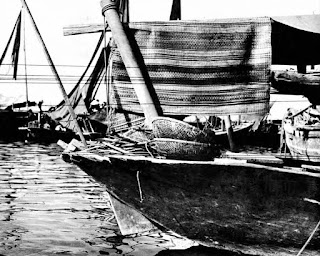 |
| Coracles on a Vietnamese fishing junk, probably late 1950s or early 1960s. Source: The Junk Blue Book of 1962. |
Primary sources:
- Coracles of the World, Peter Badge
- The Junk Blue Book of 1962

